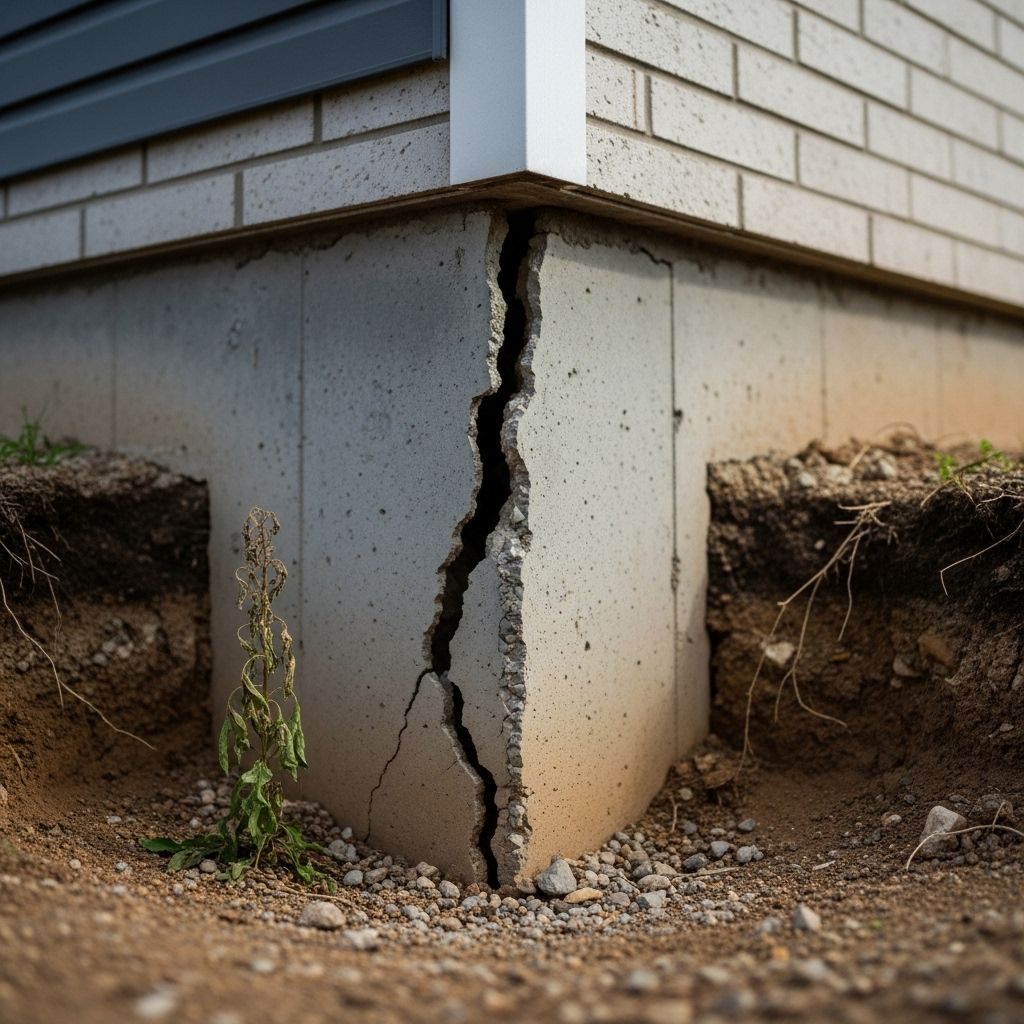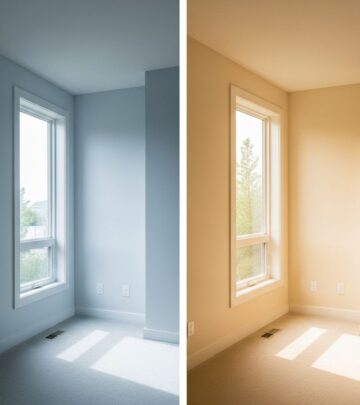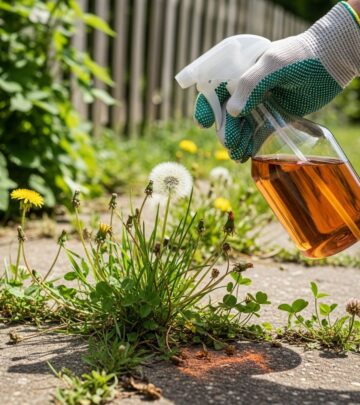Sinking Foundation: Essential Guide To Causes, Signs & Repairs
Learn how to spot the warning signs of foundation problems and take action before costly damage occurs

Image: HearthJunction Design Team
Understanding Sinking Foundations: Causes, Signs, and Solutions
A home’s foundation serves as the critical base that supports the entire structure. When that foundation begins to sink or settle unevenly, it can lead to serious structural problems throughout your house. Understanding why foundations sink, how to identify the warning signs, and what repair options are available can help homeowners address these issues before they become catastrophic.
Foundation problems might seem overwhelming, but with proper identification and timely intervention, most foundation issues can be successfully resolved. This guide will walk you through everything you need to know about sinking foundations and how to protect your home’s structural integrity.
What Causes a Foundation To Sink?
Foundations can sink for several reasons, ranging from environmental factors to construction issues. Understanding these causes can help you prevent problems or address them effectively when they occur.
Changes in Weather and Moisture Conditions
Weather patterns play a significant role in foundation stability. Floods, droughts, and extreme temperature fluctuations can all contribute to foundation problems in different ways:
- Flooding and Excess Moisture: When soil becomes saturated with water, it can erode or wash away from beneath your foundation, creating voids that cause the structure to sink.
- Drought Conditions: Extended dry periods cause soil to shrink and crack, reducing its ability to support the foundation evenly.
- Freeze-Thaw Cycles: In colder climates, ice formations can develop under your home when damp soil freezes, expanding and shifting your foundation upward. When this ice melts, the soil may not return to its original position.
It’s normal for soil to contract and expand depending on how much water it absorbs—a process known as shrink-swell—but this can cause foundation issues if the soil wasn’t properly compacted or prepared during construction.
Poor Construction Practices
The quality of initial construction significantly impacts a foundation’s long-term stability:
- Inadequate Planning: The U.S. Department of Housing and Urban Development has outlined specific foundation requirements that home builders must follow. Homes built more than 50 years ago may not meet current building codes.
- Improper Soil Preparation: If contractors fail to properly prepare and compact the soil before pouring the foundation, settling issues are likely to develop over time.
- Mortar Joint Issues: Even code-compliant homes can experience foundation shifting due to mortar joint structures that absorb moisture and allow movement in the foundation.
- Inadequate Drainage Systems: Poorly designed or installed drainage around the foundation can lead to water accumulation and soil erosion.
Soil Composition and Conditions
The type and condition of soil beneath your home can significantly impact foundation stability:
- Clay Soils: These soils are particularly problematic as they expand dramatically when wet and shrink when dry, causing foundation movement.
- Sandy Soils: While sandy soil drains well, it can compress under the weight of your home over time, leading to settlement.
- Fill Soil: If your home was built on fill soil that wasn’t properly compacted, settling is almost inevitable.
- Building on Unsuitable Land: Homes built over former swampland, landfills, or areas with high water tables face increased risks of foundation problems.
Tree Root Influences
Large trees near your home can impact your foundation in two significant ways:
- Moisture Extraction: Tree roots can absorb significant amounts of water from the soil, causing it to dry out and shrink, especially during drought conditions.
- Physical Displacement: As tree roots grow and expand, they can physically displace soil and create voids under the foundation, leading to instability and sinking.
Hydrostatic Pressure
Water buildup around your foundation creates hydrostatic pressure—the force exerted by standing water against your foundation walls. This pressure can cause foundations to crack, shift, or sink over time, especially in areas with poor drainage or high water tables.
Signs Your Foundation Is Sinking
Recognizing the early warning signs of foundation problems can save you from costly repairs down the road. Here are key indicators that your foundation might be sinking:
Visible Structural Changes
- Cracks in Walls: Look for diagonal cracks that are wider at one end, particularly around doorways and windows.
- Uneven or Sloping Floors: Use a level or roll a marble across the floor to check for slopes or dips.
- Separation Between Walls and Ceiling: Gaps appearing where walls meet ceilings indicate shifting.
- Sticking Doors and Windows: Doors and windows that suddenly become difficult to open or close suggest frame distortion due to foundation movement.
External Signs
- Visible Foundation Cracks: Horizontal or stair-step cracks in the foundation itself are serious warning signs.
- Leaning or Tilting Chimney: A chimney that’s separating from the house indicates foundation movement.
- Water Pooling Around Foundation: Standing water near your foundation after rain suggests drainage issues that could lead to sinking.
- Gaps Around Exterior Doors and Windows: Spaces appearing where frames meet the house structure indicate shifting.
Basement or Crawl Space Indicators
- Damp or Musty Smells: These indicate moisture problems that could affect foundation stability.
- Visible Moisture or Water: Standing water or water marks in basements or crawl spaces suggest drainage issues.
- Sagging or Uneven Floors: Floors that dip or feel spongy underfoot may indicate foundation settlement.
How To Confirm Foundation Problems
If you suspect foundation issues, follow these steps to confirm the problem before seeking professional help:
DIY Assessment
- Document Visible Signs: Take photos of cracks, separations, and other visible issues.
- Measure Cracks: Mark the ends of cracks and measure their width. Check again in a few weeks to see if they’ve widened.
- Check Floor Levelness: Use a carpenter’s level on floors throughout your home to identify sloping areas.
- Monitor Doors and Windows: Test all doors and windows for proper operation and note any changes over time.
Professional Evaluation
While DIY assessment can help identify potential issues, a professional inspection is crucial for accurate diagnosis. A structural engineer or foundation specialist will:
- Conduct a thorough visual inspection
- Take precise measurements to determine the extent of settling
- Use specialized equipment to assess soil conditions
- Evaluate drainage patterns around your home
- Provide a detailed report with recommended solutions
Foundation Repair Methods
Several effective methods exist for repairing sinking foundations, each suited to different situations and severity levels.
Mud Jacking (Slab Jacking)
This process involves pumping a slurry mixture beneath the sinking concrete to raise it back to its original position:
- Process: Small holes are drilled through the concrete, and a mixture of soil, cement, and other stabilizing materials is pumped underneath.
- Best For: Concrete slabs, patios, driveways, and smaller foundation issues.
- Advantages: Less expensive than full foundation replacement, minimally invasive, and quick to complete.
Foundation Piers
Piers provide structural support by transferring the weight of the home to more stable soil or bedrock:
Push Piers
- Process: Steel piers are hydraulically driven deep into the ground until they reach stable soil or bedrock.
- Best For: Heavier structures and situations requiring significant lifting.
Helical Piers
- Process: Screw-like steel shafts are twisted into the soil to provide support.
- Best For: Lighter structures and areas with softer soil conditions.
Polyurethane Foam Injection
A modern alternative to mud jacking:
- Process: Expanding polyurethane foam is injected beneath the foundation, where it expands to fill voids and lift the concrete.
- Advantages: Lighter weight than mud jacking material, waterproof, and requires smaller injection holes.
Drainage Correction
Often, addressing water issues can prevent further foundation problems:
- Installing proper gutters and downspouts
- Adding French drains or other perimeter drainage systems
- Regrading the soil around the foundation to direct water away from the home
- Installing sump pumps in basements or crawl spaces
Prevention: Protecting Your Foundation
Preventing foundation problems is far less expensive than repairing them. Here are key preventive measures:
Moisture Management
- Maintain Consistent Soil Moisture: During drought conditions, use soaker hoses around the foundation to prevent soil shrinkage.
- Proper Drainage: Ensure gutters and downspouts direct water at least 5-10 feet away from your foundation.
- Grade Management: Maintain a slope away from your foundation of about 6 inches over 10 feet.
Landscaping Considerations
- Tree Placement: Avoid planting large trees closer than 15-20 feet from your home.
- Root Barriers: Install root barriers for existing trees that are close to the foundation.
- Mulch Management: Keep mulch several inches away from the foundation to prevent moisture retention against the structure.
Regular Inspections
Conduct seasonal checks of your foundation, looking for new cracks, water pooling, or other signs of problems. Early detection can prevent minor issues from becoming major repairs.
Costs and Considerations for Foundation Repairs
Foundation repair costs vary widely based on the extent of damage and the chosen repair method:
| Repair Method | Average Cost Range | Typical Timeframe |
|---|---|---|
| Mud Jacking | $1,500 – $3,500 | 1-2 days |
| Foundation Piers | $5,000 – $15,000+ | 3-7 days |
| Polyurethane Foam | $2,500 – $5,000 | 1-2 days |
| Drainage Correction | $2,000 – $6,000 | 2-5 days |
Insurance Considerations
Most homeowners insurance policies do not cover foundation repairs unless the damage results from a covered peril, such as a burst pipe or fire. However, some policies offer additional coverage through riders or endorsements. Always check with your insurance provider to understand your coverage.
Selecting a Foundation Repair Contractor
When choosing a contractor for foundation repairs:
- Look for companies with specific experience in foundation repair
- Verify licensing, insurance, and bonding
- Check references and online reviews
- Get multiple detailed estimates in writing
- Ask about warranties and guarantees on work performed
- Inquire about payment schedules and financing options
When to Call a Professional
While some minor foundation issues might be manageable with DIY solutions, most foundation problems require professional attention. Contact a foundation specialist immediately if:
- Cracks wider than ¼ inch appear in your foundation or walls
- Doors and windows throughout the house become difficult to open or close
- Floors become noticeably uneven or sloped
- Water consistently pools around your foundation after rain
- Your chimney is leaning or separating from the house
Frequently Asked Questions (FAQs)
Q: How can I tell if foundation cracks are serious or just normal settling?
A: Hairline cracks (less than 1/16 inch wide) that don’t change over time are typically normal settling. Horizontal cracks, cracks wider than ¼ inch, or cracks that continue to widen are serious and require professional evaluation.
Q: Can I sell a house with foundation problems?
A: Yes, but you must disclose known foundation issues to potential buyers. Foundation problems typically reduce a home’s value and may limit buyer financing options. Getting a repair estimate can help negotiate a fair price.
Q: How long do foundation repairs last?
A: When properly done by qualified professionals, most foundation repairs should last the lifetime of the home. Quality repairs typically come with warranties ranging from 10 years to lifetime guarantees.
Q: Can I fix minor foundation issues myself?
A: While you can address contributing factors like poor drainage or minor cracks with DIY solutions, structural foundation repairs require professional expertise and equipment. Improper repairs can worsen the problem.
Q: How long does a typical foundation repair take to complete?
A: Most foundation repairs take between 2-7 days, depending on the extent of the damage and the repair method used. Weather conditions and unforeseen complications can extend this timeframe.
Conclusion: Protecting Your Home’s Foundation
Your home’s foundation is its most critical structural component. By understanding the causes of foundation problems, recognizing early warning signs, and taking prompt action, you can protect your home’s structural integrity and value.
Regular maintenance and early intervention are key to preventing minor foundation issues from becoming major structural problems. When in doubt, consult with a professional foundation specialist who can provide expert guidance tailored to your specific situation.
Remember that addressing foundation problems promptly not only preserves your home’s value but also ensures the safety and comfort of everyone who lives there. With proper care and attention, your foundation can continue to provide solid support for your home for decades to come.
References
- https://www.thisoldhouse.com/foundations/reviews/house-foundation-sinking
- https://www.angi.com/articles/sinking-foundation.htm
- https://www.healthybasementsystems.com/about-us/blog/48938-why-foundations-sink-into-the-soil-causes-and-solutions.html
- https://vfsworks.com/blog/causes-and-consequences-of-a-sinking-foundation/
- https://www.thehomesdirect.com/blog/houses-sinking-how-to-fix-sinking-foundation
Read full bio of Srija Burman










